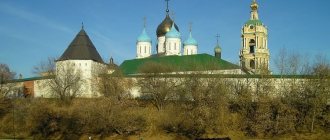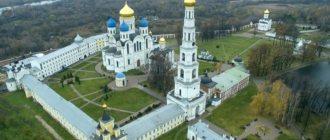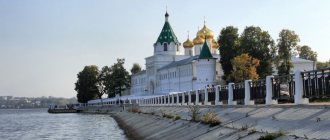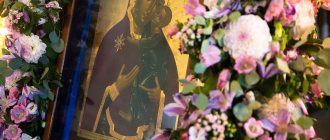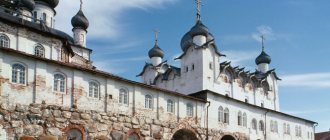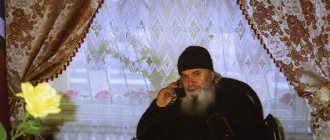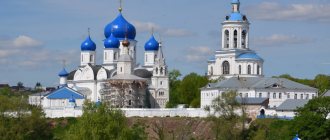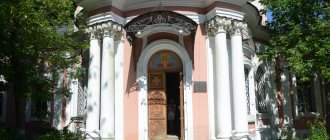The history of our country is often cruel and merciless to historical monuments, especially if they have sacred, spiritual significance. Many churches were destroyed, more than one monastery was razed to the ground, and we can only learn about them from the memories of eyewitnesses. But there are monasteries that were luckier and which history has preserved almost intact for posterity. Among these lucky ones - Donskoy Monastery, which, although it has gone through many hardships, has nevertheless stood indestructible, and today hospitably opens its gates to tourists and parishioners.
How to get to the Donskoy Monastery?
- Naturally, the most profitable, simple and budgetary, and therefore the most popular way to travel around the capital is the metro, so if you are planning to head to the Donskoy Monastery, you should find out how to get there by metro. It's simple: the Moscow metro station closest to the monastery is Shabolovskaya , so feel free to get to this station from anywhere in the white-stone. Further to the monastery you will need to either walk a little (about 500 meters) or take tram number 14.
- You can also get to the monastery from the Leninsky Prospect and Gagarin Square : follow the signs from there along Vavilova Street, and you won’t miss seeing the monastery walls from afar.
What to choose
Due to frequent travel difficulties on Moscow roads, the only way to get from point A to point B, allowing you to calculate the exact travel time, is to take the metro. In other cases, it is worth taking into account the periods when the roads are busiest. These are morning and evening rush hours, especially at the end of the work week and on holidays. Also, the situation is noticeably aggravated by unfavorable weather conditions (heavy rains, snowfalls). During these periods, it is advisable to either, if possible, refrain from traveling, or use the metro.
Article on the topic: Monasteries of Moscow
Schedule of services of the Donskoy Monastery
Services at the Donskoy Monastery in Moscow are held according to their own special schedule.
- Every day at 6:40 a Brotherly prayer service is served, at 7:40 the Hours are read, from 8:00 the Divine Liturgy, Holy Moleben and Memorial Service are served, at 16:40 - Evening service.
- Every Wednesday at 16:00 a prayer service is held at the icon of the Mother of God “The Tsaritsa”.
- On Saturdays, the First Liturgy is served at 8:00, and the Second Liturgy is served at 9:00, 16:20 is the time of confession, and at 17:00 is the All-Night Vigil.
- On Sundays, three liturgies are served: at 7:00 - Early in the Small Cathedral, at 9:00 - Middle in the Big Cathedral, at 10:00 - Late in the Church of St. Seraphim of Sarov, so even if by an unfortunate accident you overslept the Early Liturgy, then they should definitely arrive in time for the Middle and Late. In addition, on Sunday at 16:40 a special evening service and akathist is held before the relics of St. Tikhon, Patriarch of All Russia.
- On the eve of every church holiday, an All-Night Vigil is held at the Donskoy Monastery (starting time - 17:00).
Important! Above is the general schedule of services at the Donskoy Monastery in Moscow, which may vary depending on the characteristics of the church calendar.
There is a special schedule of services at the monastery's courtyards (small monasteries located separately).
- In the Church of the Ascension of the Lord in the village of Knyazevo, on weekdays the Liturgy is served at 7:40, on holidays and Sundays - at 8:40, and on the eve of holidays and on Saturdays - at 17:00. Before the evening service you can confess here.
- In the Church of St. Sergius of Radonezh in the village of Zelenogradsky, on Saturdays and holidays the Liturgy begins at 8:00, on Sundays at 7:30, and Vespers at 17:00.
Important! The sacrament of Baptism is performed after a preliminary appointment and conversation with the priest, the sacrament of Wedding - on certain days according to the church charter, the sacrament of Unction - during Lent on Tuesdays at 18:00.
Abbots, governors
- Gury (mentioned 1598)
- Sergius (mentioned 1621)
- Euphrosynus (? - 1634) dismissed
- Theodosius (May 1, 1634 - mentioned 1635)
- …
- Athanasius (November 30, 1678 - February 1681)
- Gerasim (mentioned June 1682)
- Leonty (mentioned June-July 1683)
- Nikon (August 1683 - June 1689)
- Anthony (Odinovich) (mentioned 1692 - mentioned 1697)
- Arseny (Kirillov) (mentioned July 1, 1697 - ?)
- Afanasy (mentioned 1853)
- Paul
- Arkady (Yatsenko) (1862 - 1869)
…
- Nikon (Purlevsky) (1918 - 1919)
- Agathodor (Markevich) (1991 - December 25, 2009)
- Kirill (Pokrovsky) (December 25, 2009 - July 26, 2012)
- Paramon (Dove) (July 26, 2012 - February 26, 2019)
- Foma (Demchuk) (February 26, 2022 - August 25, 2020)
- Evgeny (Kulberg) (August 25 - December 8, 2020)
- Feognost (Guzikov) (from December 8, 2020)
Donskoy Monastery: where to stay for a pilgrim or tourist?
- a pilgrimage hotel on the territory of the Donskoy Monastery , which can accommodate its guests in rooms accommodating from 1 to 6 people, as well as from 16 to 22 people for organized pilgrimage groups. Of course, this is not an overnight stay for the citizens most spoiled by civilization, but every floor has amenities (toilets, washbasins, showers with hot water), and what else does a weary traveler need from a temporary shelter? If you like to spend the night within the walls of the monastery, make inquiries by calling +7-495-952-02-63, and they will cordially provide you with an overnight stay for 400 rubles per day. Among the unique advantages of this hotel is its location in the historical center of the capital and close proximity to the most famous Moscow shrines: the Novodevichy, Pokrovsky and Novospassky monasteries, as well as the Danilovsky cemetery. There is also internet here and they accept bank cards.
- If you just need the feeling of home comfort, choose the Vudoma apartments (Lesteva St., 20). Here, in addition to a comfortable and modern living room, bedroom, kitchen, bathroom and hallway, there is free Internet and parking. True, this pleasure already costs 4,500 per night, so weigh the ratio of price and comfort and make the right decision.
Pilgrimage Hotel
Don Cemetery "Old"
It arose in 1591. The cemetery is located in the southwest of Moscow. Its area is approximately 13 hectares. Famous political figures, scientists, writers, Decembrists, and participants in the War of 1812 were buried here. By the beginning of the 20th century it was overcrowded. Therefore, it was necessary to fence off a large area behind the southern wall of the monastery in order to expand its borders. This is how the cemetery arose, which was called “New”. It has its own separate entrance. At the eastern wall of the “Old” cemetery you can see high reliefs that were removed from the Cathedral of Christ the Savior and preserved from destruction. There are no burials as such here these days. Anyone who wants to visit the Dmitry Donskoy Monastery in Moscow and the “Old” cemetery on its territory will find it useful to know that it is open from 08.00 to 18.30 daily.
History of the Donskoy Monastery
Now the Donskoy Monastery is located within the city, moreover, in its very historical center. At the time of its founding (and this is the end of the 16th century), it was located outside the city walls, south of the capital. The first building was a small, compact church of the Don Mother of God , which is still lovingly called Small by monks and parishioners. Much later, the Church of the Don Icon (today the Great Church), a bell tower and a wall with twelve towers and gate churches were added. The monastery was a traditional resting place on the route of the “royal pilgrimage”: representatives of the august family stopped here on the way to the Savvino-Storozhevskaya monastery, therefore the Donskoy monastery was not deprived of royal affection.
However, the monastery did not only know times of prosperity. In 1771, during the days of the terrible Plague Riot , an angry crowd killed the archbishop who hid within the walls of the monastery, who ordered the miraculous healing icon to be removed from the city gates; during the Patriotic War, the monastery was robbed completely by Napoleonic soldiers. Since 1920, the Anti-Religious Museum of Art has operated within the walls of the monastery, and since the mid-1930s, the Museum of Architecture . And only in 1991 the Donskoy Monastery was again returned to the Moscow Patriarchate and the monastic life of the monastery was resumed, which is now led by Abbot Paramon (Golubka).
In troubled times, the Small Cathedral was destroyed
During the Time of Troubles, the Old Cathedral was looted and destroyed. During the restoration under Mikhail Fedorovich, the monastery was restored, but unfortunately not completely.
In 1650, the Donskoy Monastery was assigned to St. Andrew's, and in 1673 a refectory part was added to the Small Cathedral.
In 1678, in honor of the victory over the Turks in the Battle of Chiginir, two chapels were erected - the southern one in honor of Sergius of Radonezh, and the northern one in memory of the Great Martyr Fyodor Stratelates.
In 1679, the Donskoy Church was painted by Leonty Chulkov and Fyodor Evtiev.
Ivan Zabelin
Russian historian, specialist in the history of Moscow
Historian Ivan Zabelin described the Time of Troubles as follows:
“Soon after the death of Tsar Fyodor Ioannovich, the Time of Troubles in our history began, a time of imposture and interregnum, disastrous for the entire state and, especially, for Moscow. Then almost the entire throne room was burned and devastated by the Poles, so contemporaries very rightly called this time the Moscow devastation. The newly founded monastery, which suffered the general fate of destruction and devastation, did not escape the evil disaster. Since it was actually a sovereign building, in this stateless time there was no one to remember it; he was forgotten and left in the care of his meager brethren.”
In 1687, the monastery restored its abbess and its original independence, and before that, in 1679, the Sharovkin Assumption and Zhizdrinsky Trinity monasteries, as well as Tikhon’s Monastery, were assigned to it.
1684
this year the construction of the Great Cathedral of the Donskoy Monastery began
In 1684, construction began on the Great Cathedral of the Donskoy Monastery, but already in 1687 the work was frozen due to the Crimean campaign of Peter I and the depletion of the monastery treasury.
The construction of the new temple was completed only in 1697. The large cathedral was built in the Naryshkin style and placed on a high basement. Its heads were installed in the direction of the cardinal points.
Sights of the Donskoy Monastery
The architectural ensemble of the monastery was formed mainly in the 16th-17th centuries. Fortunately, despite all the hardships that befell the monastery, most of the historical buildings have survived to this day.
- The oldest and, perhaps, most unique building on the territory of the monastery is Small Cathedral of the Don Mother of God (Small Cathedral of the Donskoy Monastery). This is a striking example of a single-domed temple from the era of Boris Godunov and the only pillarless temple in Russian architecture of the 16th century.
- Great Cathedral of Our Lady of the Don (Great Cathedral of the Donskoy Monastery) contrasts with its “big brother” in its scale and grandeur. The temple is raised on a high foundation and is surrounded by a spacious gallery. The interior decoration features a carved iconostasis with images of the famous “Fryazhsky letter”, distinguished by the most accurate and reliable depiction of the material world.
- Rising above the northern gate church, consecrated to the glory of the Tikhvin Icon of the Mother of God, on the porch of which is preserved beautiful forged lattice of the 17th century.
- The famous Moscow Baroque style corresponds to brick monastery walls, towers and the house of the monastery governor.
- The Church of the Archangel Michael at one time had the opportunity to visit both the tomb of the Golitsyn family and the museum of memorial sculpture. Today in the temple there are only gravestones from the monastery necropolis.
- In the middle of the 18th century Bell tower of the Donskoy Monastery was the tallest building in the area. Today the capital is flooded with skyscrapers, and the height of the monastery bell tower will no longer surprise anyone, but it still stubbornly stretches its baroque dome into the sky.
- If you want to feel the spirit of the Russian nobility around you, go for a walk along the paths of the Donskoy Monastery necropolis. On old Donskoy cemetery you will find the burial places of the most influential aristocratic families: the Golitsyns, Naryshkins and others. The poet V. Pushkin (uncle of the great Alexander Sergeevich), historian V. Klyuchevsky, philosopher P. Chaadaev are also buried here. The tombstones themselves are of considerable interest: there are baroque sarcophagi made of white marble, stylizations of Egyptian pyramids, columns topped with a “sacrificial” urn, traditional crosses, and sculptural images of angels and mourners. The Donskoy Monastery cemetery is open daily (opening hours 8:00 – 18:30), and excursions are held on its territory.
During World War II, the monastery was plundered by French soldiers
The modern complex of the monastery was formed throughout the 18th century. Thus, from 1686 to 1711, builders erected a stone fence with twelve towers at the expense of the son of the Duma clerk Yakov Kirillov, who owned chambers on Bersenevskaya embankment.
In 1714, the Don Church was erected above the northern gate of the monastery in honor of the Tikhvin Icon of the Mother of God.
Between 1730 and 1753, a bell tower was erected over the western gate. The construction was carried out in turn by three architects - Pietro Trezzini, Dmitry Ukhtomsky and Alexey Evlashev.
Archbishop Ambrose Zertis-Kamensky, killed within the walls of the Donskoy Monastery during the Plague Riot
In 1771, during the Plague Riot, Archbishop Ambrose was killed in the monastery. During the epidemic, the clergyman ordered the Bogolyubskaya Icon of the Mother of God to be removed from the Varvarsky Gate of Kitay-Gorod.
This step enraged the people, in the heat of which they killed the archbishop, who was hiding in the monastery.
In the first half of the 80s of the 18th century, the Italian artist Anton Claudo painted the walls of the Greater Cathedral with gospel and biblical scenes.
The appearance of the temple also underwent changes - the main volume of the quadrangle was built on, the rows of kokoshniks were hidden, and the roof received a hipped roof.
Kokoshnik
in architecture: semicircular or pointed completion of a facade or vault
During the Patriotic War of 1812, the monastery was barbarically plundered when Napoleonic army occupied Moscow. Part of the regiment of the Second Horse Guards was quartered in the monastery; the horses lived in cells along with the privates.
Leaving the monastery, French soldiers stole crowns from icons, frames, vestments and all other decorations.
The premises of the Donskoy Monastery were partially destroyed. The monastery was restored with donations from the ataman of the Don Cossack army, Count Matvey Platov. With his money, new icons of the iconostasis of the Great Cathedral were made.
Shrines of the Donskoy Monastery
- Without a doubt, the main shrine of the monastery is the one that gave the holy monastery its name. Don Icon of the Mother of God, belonging to the brush of St. Theophan the Greek, inspired Russian soldiers with faith in victory during the Battle of Kulikovo, and was later placed in the iconostasis of the Great Cathedral of the monastery. Today this shrine is located in the Tretyakov Gallery, but on the day of the glorification of the Don Icon of the Mother of God (September 1), it is solemnly transferred to the Donskoy Monastery for a festive service.
- Among other things, the Great Cathedral can rightfully be proud relics of Patriarch of All-Russian Tikhon, which were discovered completely by accident during a fire in the refectory in 1992. Today, the relics of Patriarch Tikhon in the Donskoy Monastery, as evidence of this miracle, are kept in a golden shrine within the walls of the Great Cathedral.
- Among the revered shrines of the Small Cathedral are Icon of the Mother of God “Feodorovskaya” and “The Sign”, as well as a list of the miraculous Don image of the Mother of God.
Monastery in the 20th century
The Orthodox monastery is famous for the fact that Patriarch Tikhon spent the last years of his life within its walls. After the revolutionary events of 1917, he publicly condemned the atrocities that were happening and was persecuted for this. The Patriarch was isolated from his flock, and he lived in a monastery.
In the spring of 1925, the disgraced church hierarch was buried in the Small Monastery Cathedral. The following year the monastery was closed. An anti-religious museum was created on its territory. Then a boarding school was opened here, and after that a factory and a dairy farm.
Since 1935, an architecture museum has opened on the monastery territory. Fragments of ancient buildings to be destroyed began to be brought for him from different parts of the city. Thus, high reliefs of the destroyed Cathedral of Christ the Savior, ancient tombstones from dug up cemeteries and carved frames taken from the Sukharevskaya Tower came to the former monastery.
Small Cathedral of Our Lady of the Don
A few years after the Great Patriotic War, the Small Cathedral was returned to the church, but the monastery itself was not restored. The question of reviving monastic life was raised in 1982, but several years of discussions did not lead to any result. Only in 1990 did the monastery buildings become the property of the church. After this, large-scale restoration work began here.
Donskoy Monastery on video
See what the Donskoy Monastery looks like in the video. Enjoy watching!
The Donskoy Monastery in Moscow, the photo of which delights the eyes of every tourist and pilgrim, is a silent, but no less eloquent reminder to all of us that strength of spirit will help us withstand the most terrible adversities. There have been so many of them over the long history of the monastery - and you can’t remember them all, but look - the monastery is still alive and thriving, and praying to its ancient shrines, and is open to everyone whom need, reverence or a thirst for knowledge has brought to its hospitable walls!
Necropolis
During the years of revival of the monastery it was possible to improve it. Now the cemetery with the graves of famous people of Russia is open to the public.
Who is buried in the Donskoy Monastery in Moscow?
N.M. Karamzin wrote that “almost everyone approaches him... with emotion and tears: for there is the main cemetery of the nobility and rich merchants . And not only. Empress Catherine II herself in 1792 , according to which, if death overtakes her in Moscow, she must be buried near Donskoy. The queen nevertheless died in the city on the Neva, so she did not deserve to be buried here. Now the necropolis is the graves:
- more than 100 representatives of the family of princes Golitsyn;
- Georgian aristocrats (also about 100);
- 90 veterans of the Patriotic War of 1812;
- relatives of A.S. Pushkin, A.S. Griboedov, I.S. Turgenev, L.N. Tolstoy;
- here is the final resting place of many famous scientists: historian V.O. Klyuchevsky , the creator of Russian aviation N.I. Zhukovsky , and many others.
There are also relatively new graves of historical figures here: in the 2000s, the ashes of the writer N.S. Shmelev, generals A.I. Denikina, V.O. Kappel, philosopher I.A. Ilyina.
Finally, there are burials of odious personalities, for example, a landowner from the 18th century rested here. Daria Saltykova (“Saltychikha”), who tortured her serfs.
The necropolis of the monastery includes not only cemeteries, but also some burials inside churches. Thus, in the Small Cathedral there is the grave of Archbishop Ambrose of Moscow, who was killed during the “Plague Riot” of 1771 by angry Muscovites. The Bishop tried to limit people’s access to the miraculous Bogolyubsk Icon of the Mother of God, for which he was tortured and then killed. Those who committed an evil deed were anathematized and then executed. And the bishop rested where he died.
What is “buried” in Donskoy?
This is also a completely legitimate question. During the Soviet years, the then closed monastery was still considered the “architectural cemetery” of the capital; the remains of destroyed historical monuments and tombstones of devastated cemeteries were brought here, because it was here that the Museum of Architecture was located (since 1934). Nowadays on the eastern wall of the monastery you can see fixed high reliefs of the Cathedral of Christ the Savior, on the northern wall - fragments of the decor of the Sukharev Tower, as well as the Assumption Church from Pokrovka Street. Visitors are also greeted by a whole “alley” of tombstones from destroyed Moscow cemeteries. The “alley” itself, along which there are monuments and crosses, leads to the Small Cathedral.
Quadriga from the Triumphal Arch in the Donskoy Monastery
